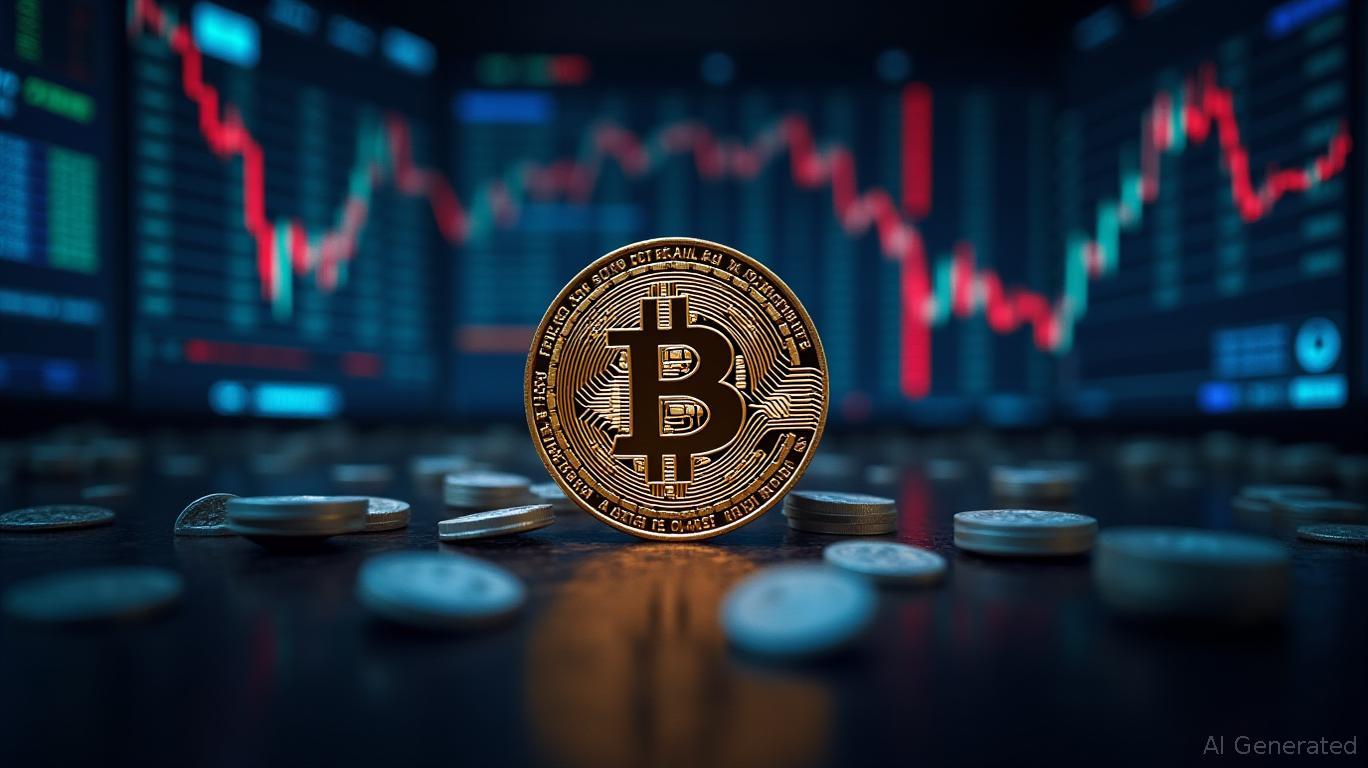Bitcoin Updates: Trade Agreement Lifts Crypto Market, Yet Global Tensions Spark ETF Withdrawals
- U.S.-China trade deal reduces tariffs and eases chip exports, briefly boosting Bitcoin and altcoins. - Russian envoy hints at potential crypto policy shifts amid Ukraine war timeline speculation. - Bitcoin surged $2,000 post-announcement but reversed as ETFs lost $471M amid macroeconomic uncertainty. - Geopolitical tensions and Fed hawkishness drive $150M crypto liquidations despite diplomatic progress. - Market infrastructure evolution pressures regulators to balance crypto innovation with geopolitical
The trade accord between the U.S. and China, revealed in October 2025, has reverberated across international financial markets, including the crypto industry, as countries adjust their policies in response to evolving geopolitical circumstances. This year-long agreement, which lowers U.S. tariffs on Chinese imports to 47% and relaxes restrictions on chip exports, has been linked to a temporary rally in
The immediate effect of the trade pact on digital assets was clear, with Bitcoin jumping from $108,000 to nearly $110,000 shortly after the news broke;

Despite the initial surge in optimism, U.S. spot Bitcoin ETFs saw $471 million in withdrawals, as noted by Blockchain Magazine. Funds managed by Fidelity and BlackRock’s
These events are further complicated by the broader geopolitical landscape. Dmitriev’s comments on the Ukraine conflict, delivered at a Saudi investment forum, highlighted the unpredictable nature of international disputes and their influence on economic strategies. While Moscow has not made any direct announcements regarding crypto regulation, the timing has fueled speculation that Russia and similar nations may increasingly turn to digital currencies for cross-border transactions as conventional financial systems come under greater scrutiny.
The aftermath of the U.S.-China trade deal also underscores the ongoing struggle between regulatory certainty and technological progress in the market. As Mastercard moves to acquire Zerohash to enhance crypto settlement processes, and platforms like Blazpay secure funding through audited token sales, the infrastructure supporting global digital payments continues to advance. These trends may prompt regulators around the world to develop clearer guidelines, especially as shifting geopolitical realities create both new possibilities and challenges for digital asset adoption.
Disclaimer: The content of this article solely reflects the author's opinion and does not represent the platform in any capacity. This article is not intended to serve as a reference for making investment decisions.
You may also like
Ethereum Updates: Brett's Meme-Scalability Fusion May Transform the Future of DeFi on Ethereum
- Grayscale's Solana ETF (GSOL) and Layer Brett (LBRETT) dominate crypto narratives, with Solana's price surging past $190 amid institutional staking growth. - Layer Brett's Ethereum-based Layer 2 project combines meme culture with scalability, launching a public testnet in late 2025 after $4.43M in private funding. - The project aims to slash gas fees while leveraging viral branding, positioning itself as a community-driven alternative to traditional DeFi platforms. - Analysts highlight LBRETT's potential

Bitcoin News Update: Bitcoin Decline Underscores Dollar Strength While Fed's Warnings Dampen Hopes for Trade Agreement
- Bitcoin fell below its 200-day SMA on October 30, signaling bearish momentum as the dollar hit a three-month high amid Fed caution. - A U.S.-China trade deal reduced tensions but failed to boost crypto, with Bitcoin dropping 4% despite tariff cuts and cooperation pledges. - Divergent central bank policies (ECB/BOJ inaction vs. Fed uncertainty) fueled dollar gains, pushing EUR/USD to a two-week low and USD/JPY to an 8.5-month high. - Gold and crypto faced downward pressure from dollar strength and geopoli

Insider trading is an SEC country club looking for a scapegoat
Bitcoin spot volume passes $300B in October as traders show 'healthy' pivot